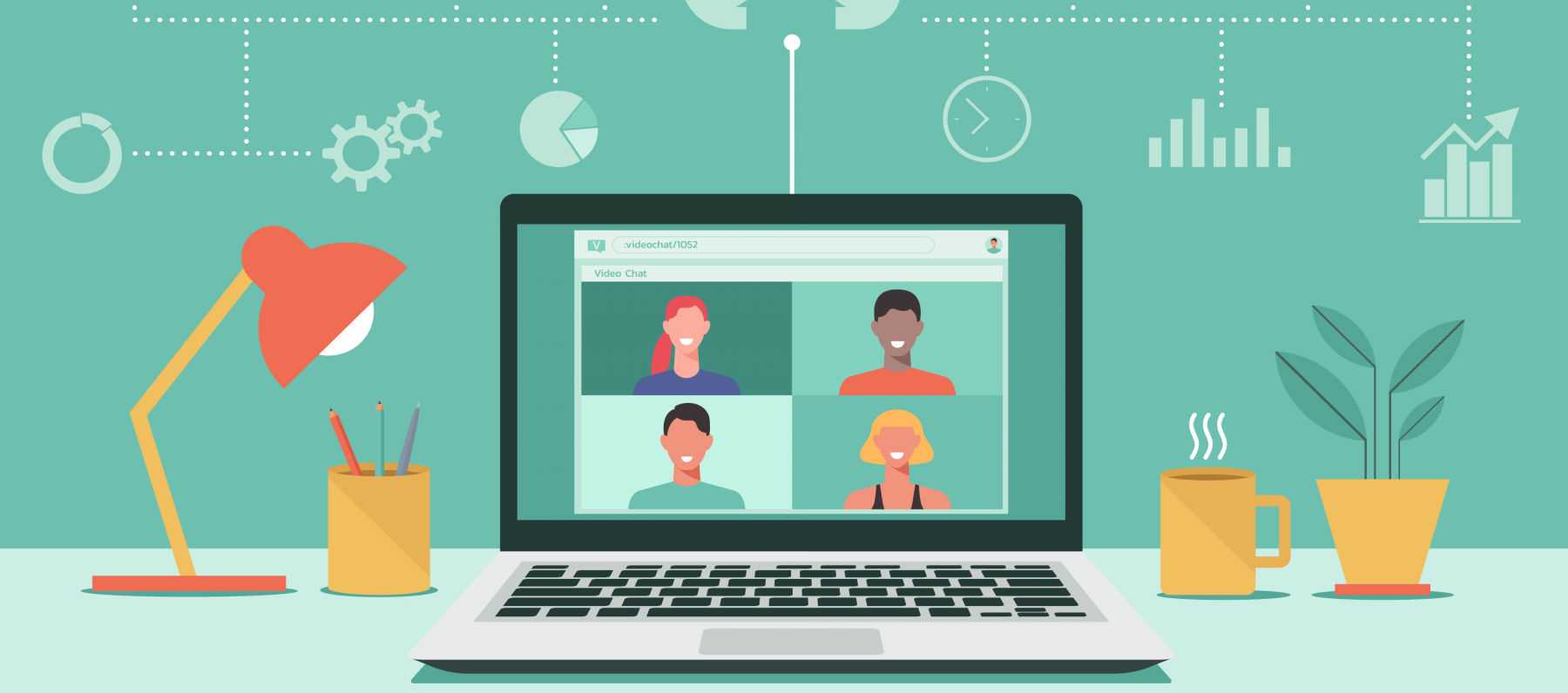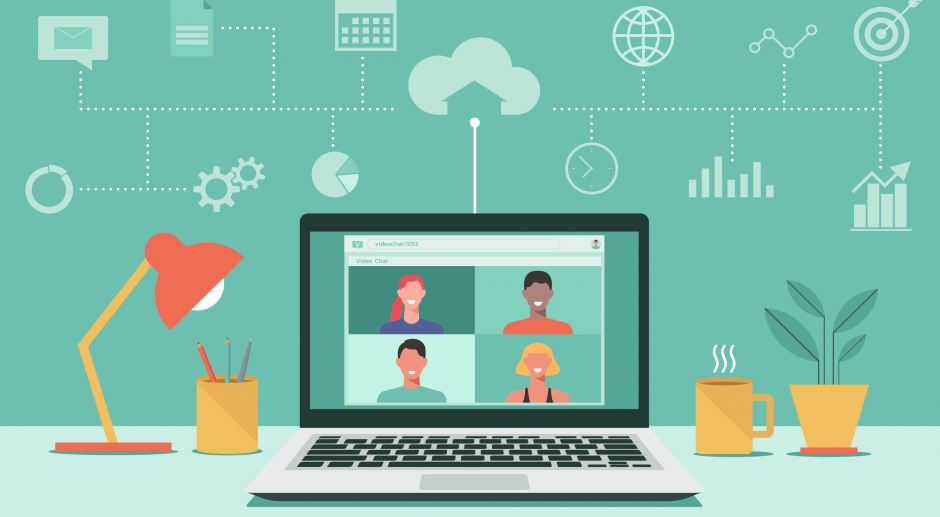Sign up for our monthly newsletter

Four key lessons for digitising a co-design workshop
As many of us are currently learning, engaging with others digitally presents new and different challenges from traditional face-to-face connection. It can be difficult to navigate how to transition from an in-person session to a digital engagement without losing the dynamics and impact of your original session.
We know this from experience. In March, ThinkPlace worked with an international insurance company to host an online social innovation workshop for over 20 people from their Australian and New Zealand division. The session was originally planned to take place in-person, but as the COVID-19 crisis rapidly escalated, our partners quickly transitioned to exclusively working from home, and we had just a few days to adapt the workshop to an online format.
Designing this transition was not without its challenges, but thanks to the team’s hard work and preparation, the online workshop was a great success. We’ve brought together the four key lessons about conducting digital workshops that we learnt from the experience: the biggest challenges we faced, and how we overcame them.
Designing the workshop for the most technologically challenged users
The challenge:
When you’re running a workshop where participants are co-located, it’s easy to explain exercises, answer questions and make sure that everyone is on the same page. Working in a digital environment, however, this becomes a lot more difficult. In addition to assisting your participants to understand exercises and workshop content, you now also need to assist them to communicate and express themselves using new digital tools – which if not handled properly can really disrupt your workshop.
How we overcame it:
• To make sure the workshop went smoothly on the day, we first held a dry run of the workshop with members of the ThinkPlace community who hadn’t used the online tool before. This gave us a grounded insight into the friction points our participants might face with the online tool and enabled us to make sure we were giving clear and useful instructions.
• We predicted that our participants might have trouble logging onto the software that we were using as many hadn’t used it before. To ease this, we developed a simple and visual step-by-step guide demonstrating how to set up the software. We circulated this to participants 24 hours before the workshop so that they had time to familiarise themselves with the process.
• In addition to the guide, we dedicated one team member to act as tech support throughout the workshop. When a participant had troubles with the software, our tech support person was about to take the participant into a virtual breakout room to resolve the issue. This meant that the main session was able to continue without disruption, and the participant was able to join back in once ready.
Designing tech issues into the workshop
The challenge:
Even when all participants are experienced and comfortable with the software you are using, it’s highly likely that you will still run into technical difficulties that can disrupt the flow of your workshop. In a face-to-face workshop, moving participants between activities is simple - but in a digital setting, transitioning between activities and tools places extra burden on your technological tools and is the prime time for disruptions to arise.
How we overcame it:
• When we conducted our workshop dry run, we found that it took some people longer than others to join breakout groups because of the speed of their internet connection. We advised participants not to begin important conversations in breakout groups until all members of the group were present.
• In our role as facilitators, we made a point to check that every participant was connected and comfortable in whichever digital space we were in before commencing the activity.
Considering the pace of the session when designing workshops
The challenge:
As a facilitator in a face-to-face workshop, it’s your job to keep monitoring the temperature of the room and speeding up or slowing down the session where appropriate. This can be a lot more difficult to do in a digital environment when digital technologies are mediating your connection to the participants. It’s important to keep in mind that digital workshops may be more challenging for participants, as they are learning how to use new digital tools on top of being expected to engage new mindsets and participate in new activities. People also have shorter attention spans when communicating and collaborating in a digital environment.
How we overcame it:
• When the workshop was going to be a face-to-face session, we had planned to conduct it over one whole day. Moving it to a digital environment, we decided to break it up unto two different session across two different days. This enabled participants to remain engaged throughout all of the activities despite the different medium. Even then, however, we did receive feedback in the first session that participants felt their flagging towards the end of the session.
• We allocated more time for each activity than we had originally planned. This meant that there was buffer time in each activity to accommodate for difficulties with technology and other frictions associated with online collaboration.
• Much as a facilitator would around a physical workshop space, we had our facilitators move through the different breakout rooms to check in on different groups. This was a great way to gauge the pulse amongst the group and make better decision about when to move between activities.
Changing the way to break
The challenge:
Breaks in a workshop are an important time for people to give their brain a rest and reset. In a face-to-face workshop, short and sweet breaks are normally ideal to provide this reset time without ruining the flow and energy that can build up throughout a session. In a digital environment, however, you need more from yours breaks. They need to not only provide a cognitive break, but a physical one too - sitting on a chair and looking at a screen uninterrupted for extended periods of time is unhealthy and uncomfortable.
How we overcame it:
• Based on feedback from our first session, we added in more frequent 10-15 minute breaks into our workshop. This was enough time for participants to grab a coffee, a bite to eat and reset their brain so that they could be fresh for the next activity. As part of a digital engagement, the more frequent breaks boosted the energy of the workshop rather than interrupted it.
• It became clear as we progressed through the first session that during the breaks participants were not necessarily getting up and moving around, as is healthy and energising. We designed guided breaks into our second session where we facilitated stretching and short stints of yoga to give people the best opportunity to reset their body after an extended period of sitting. We found that these breaks were also a nice camaraderie-building opportunity for participants working remotely.
• We didn’t skimp on breaks. We quickly saw how important breaks were to maintaining the energy of the workshop and contributing toward a quality output, so we decided not to skip them or shorten them even if we were running short on time. Throughout the workshop, if we were ever running over, we chose to adapt our activities to make them a little shorter rather than cutting time from the breaks as we might were tempted to do.
It might be tempting to simply copy-paste your plan for an in-person workshop into a digital format, particularly if you do not have a lot of time to pivot to a digital engagement.
But as we’ve learnt, it’s vital to change your workshop design and engagement strategy to consider the dynamics of digital engagement. Incorporating these four key lessons into your digital workshop can ensure that you are still providing an engaging experience that will generate high-quality outputs.
Please reach out to us if you would like advice on how to shift co-design workshops, consultation workshops, research, user testing or training online, or to use our Airlabs service to stay connected to your ecosystem and to the people you are trying to help.
You can refer to the downloadable pdf below for more information for you or your organisation.
Get in touch about airlabs:
Australia: +61 2 6282 8852 | airlabs [at] thinkplace.com.au (subject: Airlabs%20Enquiry)
New Zealand: +64 (04) 472 1212 | info [at] thinkplace.co.nz (subject: Airlabs%20Enquiry)
Singapore: +65 9046 0340 | info [at] thinkplace.com.sg






